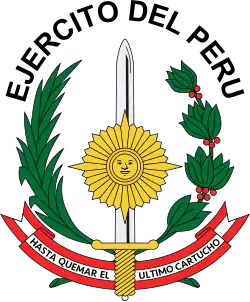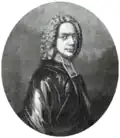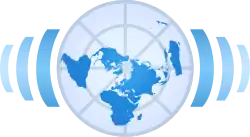Portal:Peru
Introduction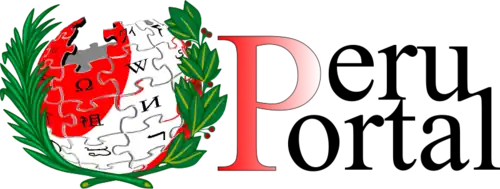
Peru, officially the Republic of Peru, is a country in western South America. It is bordered to the north by Ecuador and Colombia, to the east by Brazil, to the southeast by Bolivia, to the south by Chile, and to the south and west by the Pacific Ocean. Peru is a megadiverse country, with habitats ranging from the arid plains of the Pacific coastal region in the west, to the peaks of the Andes mountains extending from the north to the southeast of the country, to the tropical Amazon basin rainforest in the east with the Amazon River. Peru has a population of over 32 million, and its capital and largest city is Lima. At 1,285,216 km2 (496,225 sq mi), Peru is the 19th largest country in the world, and the third largest in South America. Peruvian territory was home to several cultures during the ancient and medieval periods, and has one of the longest histories of civilization of any country, tracing its heritage back to the 10th millennium BCE Caral–Supe civilization, the earliest civilization in the Americas and considered one of the cradles of civilization. Notable succeeding cultures and civilizations include the Nazca culture, the Wari and Tiwanaku empires, the Kingdom of Cusco, and the Inca Empire, the largest known state in the pre-Columbian Americas. The Spanish Empire conquered the region in the 16th century and Charles V established a viceroyalty with the official name of the Kingdom of Peru that encompassed most of its South American territories, with its capital in Lima. Higher education started in the Americas with the official establishment of the National University of San Marcos in Lima in 1551. Peru's population includes Mestizos, Amerindians, Europeans, Africans and Asians. The main spoken language is Spanish, although a significant number of Peruvians speak Quechuan languages, Aymara, or other Indigenous languages. This mixture of cultural traditions has resulted in a wide diversity of expressions in fields such as art, cuisine, literature, and music. Peru has recently gained international recognition for its vibrant gastronomy, blending Indigenous, Spanish, African, and Asian influences. Lima is now considered a global culinary capital, home to award-winning restaurants like Central and Maido. (Full article...)
| |||||||||||||||
| “ | I would not change my native land, for rich Peru with all her gold. | ” |
Basic facts & figures
More did you know...
- ...that the Almirante Grau (pictured), flagship of the Peruvian Navy, is the last gun cruiser in service in the world?
- ...that former president Alberto Fujimori is currently facing trial on charges of corruption and human rights abuses?
- ...that in comparison to sheep's wool alpaca fiber is warmer, not prickly, and has no lanolin which makes it hypoallergenic?
- ...that tenor Juan Diego Flórez broke a decades old tradition of no encores at La Scala while performing Donizetti's La fille du régiment?
- ...that Universitario de Deportes has won twenty-five national premier leagues, more than any other football club in Peru?
Peru Topics
Recognized content
| This is a list of recognized content, updated weekly by JL-Bot (talk · contribs) (typically on Saturdays). There is no need to edit the list yourself. If an article is missing from the list, make sure it is tagged (e.g. {{WikiProject Peru}}) or categorized correctly and wait for the next update. See WP:RECOG for configuration options. |
Featured articles
Featured lists
Good articles
- 1946 Ancash earthquake
- 2007 Carancas impact event
- Gómez de Alvarado
- Ampato
- Andagua volcanic field
- Augusto Jiménez Seminario
- Juan Bielovucic
- Justiniano Borgoño
- Casiri (Tacna)
- Chachani
- Sarita Colonia
- Cutervo National Park
- Forced sterilization in Peru
- Mariano Gagnon
- History of Lima
- Huascarán National Park
- LANSA Flight 502
- Misti
- Battle of Ollantaytambo
- Marcela Pérez de Cuéllar
- Peru at the 2010 Winter Olympics
- Pichu Pichu
- William H. Prescott
- Purupuruni
- Quyllurit'i
- Sabancaya
- Sara Sara
- Carlos Scharff
- Joran van der Sloot
- Squatting in Peru
- Lake Tauca
- Ticsani
- White-tailed jay
- Yucamane
WikiProjects
Things you can do
 Assess and prioritise articles (log)
Assess and prioritise articles (log) Check for copyvios at Special:Contributions/Priscilla D, tag as {{Db-copyvio}} where appropriate
Check for copyvios at Special:Contributions/Priscilla D, tag as {{Db-copyvio}} where appropriate Create:
Create:- Expand: new articles; top importance articles
 FAC / FLC: Peru national football team
FAC / FLC: Peru national football team GAN:
GAN: Merge requests: Amazonas before the Inca Empire, Chachapoyas culture
Merge requests: Amazonas before the Inca Empire, Chachapoyas culture Review: Shining Path, Universitario de Deportes
Review: Shining Path, Universitario de Deportes Translate: National University of San Marcos
Translate: National University of San Marcos Work on Lima, the current article improvement drive
Work on Lima, the current article improvement drive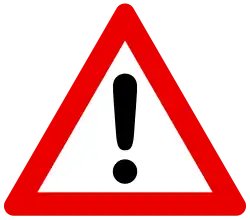 Wikify: articles needing attention
Wikify: articles needing attention
New articles
Rules | Match log | Results page (for watching) | Last updated: 2025-08-17 20:26 (UTC)
Note: The list display can now be customized by each user. See List display personalization for details.
- Werner Salcedo (edit | talk | history | links | watch | logs | tools) by Cilidus (talk · contribs · new pages (146)) started on 2025-08-17, score: 31
- Novius peruvianus (edit | talk | history | links | watch | logs | tools) by B33tleMania12 (talk · contribs · new pages (1093)) started on 2025-08-16, score: 16
- Roger Guevara (edit | talk | history | links | watch | logs | tools) by Cilidus (talk · contribs · new pages (146)) started on 2025-08-16, score: 31
- List of Olympic competitors (Li–Ln) (edit | talk | history | links | watch | logs | tools) by Habst (talk · contribs · new pages (103)) started on 2025-08-16, score: 16
- Rosselli Amuruz (edit | talk | history | links | watch | logs | tools) by Cilidus (talk · contribs · new pages (146)) started on 2025-08-15, score: 31
- César Vásquez Sánchez (edit | talk | history | links | watch | logs | tools) by Cilidus (talk · contribs · new pages (146)) started on 2025-08-14, score: 31
- List of Olympic competitors (Hy–Iz) (edit | talk | history | links | watch | logs | tools) by Habst (talk · contribs · new pages (103)) started on 2025-08-14, score: 16
- List of Olympic competitors (He–Hn) (edit | talk | history | links | watch | logs | tools) by Habst (talk · contribs · new pages (103)) started on 2025-08-14, score: 16
- List of Olympic competitors (Gp–Gz) (edit | talk | history | links | watch | logs | tools) by Habst (talk · contribs · new pages (103)) started on 2025-08-14, score: 16
- List of Olympic competitors (Fi–Fz) (edit | talk | history | links | watch | logs | tools) by Habst (talk · contribs · new pages (103)) started on 2025-08-14, score: 16
- List of Olympic competitors (Er–Fh) (edit | talk | history | links | watch | logs | tools) by Habst (talk · contribs · new pages (103)) started on 2025-08-14, score: 16
- List of Olympic competitors (Dt–Eq) (edit | talk | history | links | watch | logs | tools) by Habst (talk · contribs · new pages (103)) started on 2025-08-14, score: 16
- List of Olympic competitors (Co–Cz) (edit | talk | history | links | watch | logs | tools) by Habst (talk · contribs · new pages (103)) started on 2025-08-14, score: 16
- List of Olympic competitors (Bu–Bz) (edit | talk | history | links | watch | logs | tools) by Habst (talk · contribs · new pages (103)) started on 2025-08-14, score: 16
- List of Olympic competitors (Br–Bt) (edit | talk | history | links | watch | logs | tools) by Habst (talk · contribs · new pages (103)) started on 2025-08-14, score: 16
- List of Olympic competitors (Bo–Bq) (edit | talk | history | links | watch | logs | tools) by Habst (talk · contribs · new pages (103)) started on 2025-08-14, score: 16
- List of Olympic competitors (Be–Bf) (edit | talk | history | links | watch | logs | tools) by Habst (talk · contribs · new pages (103)) started on 2025-08-14, score: 16
- List of Olympic competitors (An–Aq) (edit | talk | history | links | watch | logs | tools) by Habst (talk · contribs · new pages (103)) started on 2025-08-14, score: 16
- List of Olympic competitors (Aa–Ak) (edit | talk | history | links | watch | logs | tools) by Habst (talk · contribs · new pages (103)) started on 2025-08-14, score: 16
- Stethorus peruvianus (edit | talk | history | links | watch | logs | tools) by B33tleMania12 (talk · contribs · new pages (1093)) started on 2025-08-14, score: 16
- Argosadalia priscilla (edit | talk | history | links | watch | logs | tools) by B33tleMania12 (talk · contribs · new pages (1093)) started on 2025-08-14, score: 16
- Gravendeelia (edit | talk | history | links | watch | logs | tools) by Tom Radulovich (talk · contribs · new pages (93)) started on 2025-08-14, score: 31
- Blanca Elena Paz (edit | talk | history | links | watch | logs | tools) by Gamaliel (talk · contribs · new pages (12)) started on 2025-08-12, score: 16
- Delphastus anthracinus (edit | talk | history | links | watch | logs | tools) by B33tleMania12 (talk · contribs · new pages (1093)) started on 2025-08-13, score: 16
- Cryptognatha della (edit | talk | history | links | watch | logs | tools) by B33tleMania12 (talk · contribs · new pages (1093)) started on 2025-08-13, score: 16
- Cryptognatha pudibunda (edit | talk | history | links | watch | logs | tools) by B33tleMania12 (talk · contribs · new pages (1093)) started on 2025-08-13, score: 16
- Cryptognatha hannah (edit | talk | history | links | watch | logs | tools) by B33tleMania12 (talk · contribs · new pages (1093)) started on 2025-08-13, score: 16
- Cryptognatha gemellata (edit | talk | history | links | watch | logs | tools) by B33tleMania12 (talk · contribs · new pages (1093)) started on 2025-08-13, score: 16
- Cryptognatha auriculata (edit | talk | history | links | watch | logs | tools) by B33tleMania12 (talk · contribs · new pages (1093)) started on 2025-08-13, score: 16
- Pentilia paulette (edit | talk | history | links | watch | logs | tools) by B33tleMania12 (talk · contribs · new pages (1093)) started on 2025-08-13, score: 16
- Pentilia egena (edit | talk | history | links | watch | logs | tools) by B33tleMania12 (talk · contribs · new pages (1093)) started on 2025-08-13, score: 16
- Pentilia jody (edit | talk | history | links | watch | logs | tools) by B33tleMania12 (talk · contribs · new pages (1093)) started on 2025-08-13, score: 16
- Pentilia bernadette (edit | talk | history | links | watch | logs | tools) by B33tleMania12 (talk · contribs · new pages (1093)) started on 2025-08-13, score: 16
- Zenoria miroi (edit | talk | history | links | watch | logs | tools) by B33tleMania12 (talk · contribs · new pages (1093)) started on 2025-08-13, score: 16
- Zenoria carbo (edit | talk | history | links | watch | logs | tools) by B33tleMania12 (talk · contribs · new pages (1093)) started on 2025-08-13, score: 16
- Zenoria westerduijni (edit | talk | history | links | watch | logs | tools) by B33tleMania12 (talk · contribs · new pages (1093)) started on 2025-08-13, score: 16
- Zenoria lativerpa (edit | talk | history | links | watch | logs | tools) by B33tleMania12 (talk · contribs · new pages (1093)) started on 2025-08-13, score: 16
- Zenoria sylvatica (edit | talk | history | links | watch | logs | tools) by B33tleMania12 (talk · contribs · new pages (1093)) started on 2025-08-13, score: 16
- Zenoria dozieri (edit | talk | history | links | watch | logs | tools) by B33tleMania12 (talk · contribs · new pages (1093)) started on 2025-08-13, score: 16
- Zenoria gordoni (edit | talk | history | links | watch | logs | tools) by B33tleMania12 (talk · contribs · new pages (1093)) started on 2025-08-13, score: 16
- Zenoria purpurea (edit | talk | history | links | watch | logs | tools) by B33tleMania12 (talk · contribs · new pages (1093)) started on 2025-08-13, score: 16
- Zenoria paprzyckii (edit | talk | history | links | watch | logs | tools) by B33tleMania12 (talk · contribs · new pages (1093)) started on 2025-08-13, score: 16
- Gilia Gutiérrez (edit | talk | history | links | watch | logs | tools) by Cilidus (talk · contribs · new pages (146)) started on 2025-08-13, score: 31
- Raúl Pérez-Reyes (edit | talk | history | links | watch | logs | tools) by Cilidus (talk · contribs · new pages (146)) started on 2025-08-13, score: 31
- Leslie Urteaga (edit | talk | history | links | watch | logs | tools) by Cilidus (talk · contribs · new pages (146)) started on 2025-08-12, score: 31
- Ántero Aspíllaga (edit | talk | history | links | watch | logs | tools) by Avocadopiu (talk · contribs · new pages (6)) started on 2025-08-07, score: 31
- Zenoria variabilis (edit | talk | history | links | watch | logs | tools) by B33tleMania12 (talk · contribs · new pages (1093)) started on 2025-08-12, score: 16
- Zenoria tricolor (edit | talk | history | links | watch | logs | tools) by B33tleMania12 (talk · contribs · new pages (1093)) started on 2025-08-12, score: 16
- Zenoria discoidalis (edit | talk | history | links | watch | logs | tools) by B33tleMania12 (talk · contribs · new pages (1093)) started on 2025-08-12, score: 16
- Mada nexophallus (edit | talk | history | links | watch | logs | tools) by B33tleMania12 (talk · contribs · new pages (1093)) started on 2025-08-12, score: 16
- Mada insolitaphallus (edit | talk | history | links | watch | logs | tools) by B33tleMania12 (talk · contribs · new pages (1093)) started on 2025-08-12, score: 16
- Mada elegans (edit | talk | history | links | watch | logs | tools) by B33tleMania12 (talk · contribs · new pages (1093)) started on 2025-08-12, score: 16
- Koki Noriega (edit | talk | history | links | watch | logs | tools) by Cilidus (talk · contribs · new pages (146)) started on 2025-08-12, score: 23
- Mada sanguinea (edit | talk | history | links | watch | logs | tools) by B33tleMania12 (talk · contribs · new pages (1093)) started on 2025-08-12, score: 16
- Lorma paprzyckii (edit | talk | history | links | watch | logs | tools) by B33tleMania12 (talk · contribs · new pages (1093)) started on 2025-08-12, score: 31
- Adira nucula (edit | talk | history | links | watch | logs | tools) by B33tleMania12 (talk · contribs · new pages (1093)) started on 2025-08-12, score: 16
- Epilachna velata (edit | talk | history | links | watch | logs | tools) by B33tleMania12 (talk · contribs · new pages (1093)) started on 2025-08-12, score: 16
- Epilachna cacica (edit | talk | history | links | watch | logs | tools) by B33tleMania12 (talk · contribs · new pages (1093)) started on 2025-08-12, score: 16
- Toxotoma staudingeri (edit | talk | history | links | watch | logs | tools) by B33tleMania12 (talk · contribs · new pages (1093)) started on 2025-08-12, score: 16
- Yape (payment) (edit | talk | history | links | watch | logs | tools) by TankFighter88 (talk · contribs · new pages (3)) started on 2025-08-12, score: 31
- Battle of Sama (edit | talk | history | links | watch | logs | tools) by Diego 2001xD (talk · contribs · new pages (2)) started on 2025-08-12, score: 31
- Battle of the Altos de Chipe (edit | talk | history | links | watch | logs | tools) by Diego 2001xD (talk · contribs · new pages (2)) started on 2025-08-12, score: 31
- Arturo Alegría (edit | talk | history | links | watch | logs | tools) by Cilidus (talk · contribs · new pages (146)) started on 2025-08-11, score: 31
- Epilachna mandibularis (edit | talk | history | links | watch | logs | tools) by B33tleMania12 (talk · contribs · new pages (1093)) started on 2025-08-11, score: 16
- Epilachna basalis (edit | talk | history | links | watch | logs | tools) by B33tleMania12 (talk · contribs · new pages (1093)) started on 2025-08-11, score: 16
- Epilachna parastriata (edit | talk | history | links | watch | logs | tools) by B33tleMania12 (talk · contribs · new pages (1093)) started on 2025-08-11, score: 16
- Epilachna callangae (edit | talk | history | links | watch | logs | tools) by B33tleMania12 (talk · contribs · new pages (1093)) started on 2025-08-11, score: 16
- Epilachna propinqua (edit | talk | history | links | watch | logs | tools) by B33tleMania12 (talk · contribs · new pages (1093)) started on 2025-08-11, score: 16
- Epilachna pseudostriata (edit | talk | history | links | watch | logs | tools) by B33tleMania12 (talk · contribs · new pages (1093)) started on 2025-08-11, score: 16
- Epilachna pastica (edit | talk | history | links | watch | logs | tools) by B33tleMania12 (talk · contribs · new pages (1093)) started on 2025-08-11, score: 16
- Epilachna pachiteensis (edit | talk | history | links | watch | logs | tools) by B33tleMania12 (talk · contribs · new pages (1093)) started on 2025-08-11, score: 16
- Epilachna mutabilis (edit | talk | history | links | watch | logs | tools) by B33tleMania12 (talk · contribs · new pages (1093)) started on 2025-08-11, score: 16
- Epilachna bisbivittata (edit | talk | history | links | watch | logs | tools) by B33tleMania12 (talk · contribs · new pages (1093)) started on 2025-08-11, score: 16
- Epilachna confixa (edit | talk | history | links | watch | logs | tools) by B33tleMania12 (talk · contribs · new pages (1093)) started on 2025-08-11, score: 16
- Toxotoma lepida (edit | talk | history | links | watch | logs | tools) by B33tleMania12 (talk · contribs · new pages (1093)) started on 2025-08-11, score: 16
- Epilachna peltata (edit | talk | history | links | watch | logs | tools) by B33tleMania12 (talk · contribs · new pages (1093)) started on 2025-08-11, score: 16
- Epilachna quirozensis (edit | talk | history | links | watch | logs | tools) by B33tleMania12 (talk · contribs · new pages (1093)) started on 2025-08-11, score: 16
- Epilachna woytkowskii (edit | talk | history | links | watch | logs | tools) by B33tleMania12 (talk · contribs · new pages (1093)) started on 2025-08-11, score: 16
- Toxotoma satipensis (edit | talk | history | links | watch | logs | tools) by B33tleMania12 (talk · contribs · new pages (1093)) started on 2025-08-11, score: 16
- Epilachna divisoides (edit | talk | history | links | watch | logs | tools) by B33tleMania12 (talk · contribs · new pages (1093)) started on 2025-08-11, score: 16
- Epilachna olmosi (edit | talk | history | links | watch | logs | tools) by B33tleMania12 (talk · contribs · new pages (1093)) started on 2025-08-11, score: 16
- Toxotoma ostensoides (edit | talk | history | links | watch | logs | tools) by B33tleMania12 (talk · contribs · new pages (1093)) started on 2025-08-11, score: 16
- Epilachna ostensa (edit | talk | history | links | watch | logs | tools) by B33tleMania12 (talk · contribs · new pages (1093)) started on 2025-08-11, score: 16
- Toxotoma geometrica (edit | talk | history | links | watch | logs | tools) by B33tleMania12 (talk · contribs · new pages (1093)) started on 2025-08-11, score: 16
- Epilachna bonplandi (edit | talk | history | links | watch | logs | tools) by B33tleMania12 (talk · contribs · new pages (1093)) started on 2025-08-11, score: 16
- Epilachna fenestroides (edit | talk | history | links | watch | logs | tools) by B33tleMania12 (talk · contribs · new pages (1093)) started on 2025-08-11, score: 16
- Epilachna strictanotata (edit | talk | history | links | watch | logs | tools) by B33tleMania12 (talk · contribs · new pages (1093)) started on 2025-08-11, score: 16
- Epilachna ignobilis (edit | talk | history | links | watch | logs | tools) by B33tleMania12 (talk · contribs · new pages (1093)) started on 2025-08-11, score: 16
- Epilachna honesta (edit | talk | history | links | watch | logs | tools) by B33tleMania12 (talk · contribs · new pages (1093)) started on 2025-08-11, score: 16
- Epilachna discoidea (edit | talk | history | links | watch | logs | tools) by B33tleMania12 (talk · contribs · new pages (1093)) started on 2025-08-11, score: 16
- Epilachna vittigera (edit | talk | history | links | watch | logs | tools) by B33tleMania12 (talk · contribs · new pages (1093)) started on 2025-08-11, score: 16
- Toxotoma divisa (edit | talk | history | links | watch | logs | tools) by B33tleMania12 (talk · contribs · new pages (1093)) started on 2025-08-11, score: 16
- Epilachna cushmani (edit | talk | history | links | watch | logs | tools) by B33tleMania12 (talk · contribs · new pages (1093)) started on 2025-08-11, score: 16
- Toxotoma monovittata (edit | talk | history | links | watch | logs | tools) by B33tleMania12 (talk · contribs · new pages (1093)) started on 2025-08-11, score: 16
- Epilachna pemptea (edit | talk | history | links | watch | logs | tools) by B33tleMania12 (talk · contribs · new pages (1093)) started on 2025-08-11, score: 16
- Epilachna oviforma (edit | talk | history | links | watch | logs | tools) by B33tleMania12 (talk · contribs · new pages (1093)) started on 2025-08-11, score: 16
- Epilachna aureopilosa (edit | talk | history | links | watch | logs | tools) by B33tleMania12 (talk · contribs · new pages (1093)) started on 2025-08-11, score: 16
- Epilachna schunkei (edit | talk | history | links | watch | logs | tools) by B33tleMania12 (talk · contribs · new pages (1093)) started on 2025-08-11, score: 16
- Toxotoma fenestrata (edit | talk | history | links | watch | logs | tools) by B33tleMania12 (talk · contribs · new pages (1093)) started on 2025-08-11, score: 16
- Epilachna simulans (edit | talk | history | links | watch | logs | tools) by B33tleMania12 (talk · contribs · new pages (1093)) started on 2025-08-11, score: 16
- Epilachna incaorum (edit | talk | history | links | watch | logs | tools) by B33tleMania12 (talk · contribs · new pages (1093)) started on 2025-08-11, score: 16
- Toxotoma fuscopilosa (edit | talk | history | links | watch | logs | tools) by B33tleMania12 (talk · contribs · new pages (1093)) started on 2025-08-11, score: 16
- Epilachna viridinitens (edit | talk | history | links | watch | logs | tools) by B33tleMania12 (talk · contribs · new pages (1093)) started on 2025-08-11, score: 16
- Toxotoma convergens (edit | talk | history | links | watch | logs | tools) by B33tleMania12 (talk · contribs · new pages (1093)) started on 2025-08-11, score: 16
- Epilachna sztolcmani (edit | talk | history | links | watch | logs | tools) by B33tleMania12 (talk · contribs · new pages (1093)) started on 2025-08-11, score: 16
- Epilachna consimilis (edit | talk | history | links | watch | logs | tools) by B33tleMania12 (talk · contribs · new pages (1093)) started on 2025-08-11, score: 16
- Toxotoma patricia (edit | talk | history | links | watch | logs | tools) by B33tleMania12 (talk · contribs · new pages (1093)) started on 2025-08-11, score: 16
- Toxotoma discolor (edit | talk | history | links | watch | logs | tools) by B33tleMania12 (talk · contribs · new pages (1093)) started on 2025-08-11, score: 16
- Epilachna obliqua (edit | talk | history | links | watch | logs | tools) by B33tleMania12 (talk · contribs · new pages (1093)) started on 2025-08-11, score: 16
- Toxotoma persimilis (edit | talk | history | links | watch | logs | tools) by B33tleMania12 (talk · contribs · new pages (1093)) started on 2025-08-11, score: 16
- Epilachna striola (edit | talk | history | links | watch | logs | tools) by B33tleMania12 (talk · contribs · new pages (1093)) started on 2025-08-11, score: 16
- Epilachna emerita (edit | talk | history | links | watch | logs | tools) by B33tleMania12 (talk · contribs · new pages (1093)) started on 2025-08-11, score: 16
- Toxotoma aureola (edit | talk | history | links | watch | logs | tools) by B33tleMania12 (talk · contribs · new pages (1093)) started on 2025-08-11, score: 16
- Epilachna peruviana (edit | talk | history | links | watch | logs | tools) by B33tleMania12 (talk · contribs · new pages (1093)) started on 2025-08-11, score: 16
- Toxotoma v-pallidum (edit | talk | history | links | watch | logs | tools) by B33tleMania12 (talk · contribs · new pages (1093)) started on 2025-08-11, score: 16
- Epilachna sexmaculata (edit | talk | history | links | watch | logs | tools) by B33tleMania12 (talk · contribs · new pages (1093)) started on 2025-08-11, score: 16
- Epilachna viridilineata (edit | talk | history | links | watch | logs | tools) by B33tleMania12 (talk · contribs · new pages (1093)) started on 2025-08-11, score: 16
- Universal Woman 2025 (edit | talk | history | links | watch | logs | tools) by Nhoiialmanzor (talk · contribs · new pages (5)) started on 2025-08-11, score: 16
- Ilich López (edit | talk | history | links | watch | logs | tools) by Cilidus (talk · contribs · new pages (146)) started on 2025-08-11, score: 31
- José Jerí (edit | talk | history | links | watch | logs | tools) by Cilidus (talk · contribs · new pages (146)) started on 2025-08-11, score: 31
- Peru at the 2025 World Aquatics Championships (edit | talk | history | links | watch | logs | tools) by WildCherry06 (talk · contribs · new pages (61)) started on 2025-08-10, score: 31
- Epilachna cuscoi (edit | talk | history | links | watch | logs | tools) by B33tleMania12 (talk · contribs · new pages (1093)) started on 2025-08-10, score: 16
- Epilachna sellata (edit | talk | history | links | watch | logs | tools) by B33tleMania12 (talk · contribs · new pages (1093)) started on 2025-08-10, score: 16
- Toxotoma dorsigera (edit | talk | history | links | watch | logs | tools) by B33tleMania12 (talk · contribs · new pages (1093)) started on 2025-08-10, score: 16
- Toxotoma fausta (edit | talk | history | links | watch | logs | tools) by B33tleMania12 (talk · contribs · new pages (1093)) started on 2025-08-10, score: 16
- Toxotoma dives (edit | talk | history | links | watch | logs | tools) by B33tleMania12 (talk · contribs · new pages (1093)) started on 2025-08-10, score: 16
- Toxotoma flavofasciata (edit | talk | history | links | watch | logs | tools) by B33tleMania12 (talk · contribs · new pages (1093)) started on 2025-08-10, score: 16
- Toxotoma disparans (edit | talk | history | links | watch | logs | tools) by B33tleMania12 (talk · contribs · new pages (1093)) started on 2025-08-10, score: 16
- Todd Anderson (scientist) (edit | talk | history | links | watch | logs | tools) by Paradoctor (talk · contribs · new pages (10)) started on 2025-08-10, score: 15
- Toxotoma pulchra (edit | talk | history | links | watch | logs | tools) by B33tleMania12 (talk · contribs · new pages (1093)) started on 2025-08-10, score: 16
- Toxotoma opulenta (edit | talk | history | links | watch | logs | tools) by B33tleMania12 (talk · contribs · new pages (1093)) started on 2025-08-10, score: 16
- Azorelloideae (edit | talk | history | links | watch | logs | tools) by Oooks1 (talk · contribs · new pages (1)) started on 2025-08-10, score: 23
- Toxotoma longicrura (edit | talk | history | links | watch | logs | tools) by B33tleMania12 (talk · contribs · new pages (1093)) started on 2025-08-10, score: 16
- Toxotoma chapini (edit | talk | history | links | watch | logs | tools) by B33tleMania12 (talk · contribs · new pages (1093)) started on 2025-08-10, score: 16
- Toxotoma mimetica (edit | talk | history | links | watch | logs | tools) by B33tleMania12 (talk · contribs · new pages (1093)) started on 2025-08-10, score: 16
- Toxotoma orbicula (edit | talk | history | links | watch | logs | tools) by B33tleMania12 (talk · contribs · new pages (1093)) started on 2025-08-10, score: 16
- Toxotoma tridentata (edit | talk | history | links | watch | logs | tools) by B33tleMania12 (talk · contribs · new pages (1093)) started on 2025-08-10, score: 16
- Toxotoma andicola (edit | talk | history | links | watch | logs | tools) by B33tleMania12 (talk · contribs · new pages (1093)) started on 2025-08-10, score: 16
- Toxotoma leechi (edit | talk | history | links | watch | logs | tools) by B33tleMania12 (talk · contribs · new pages (1093)) started on 2025-08-10, score: 16
- Toxotoma imitator (edit | talk | history | links | watch | logs | tools) by B33tleMania12 (talk · contribs · new pages (1093)) started on 2025-08-10, score: 16
- Toxotoma cuzcoensis (edit | talk | history | links | watch | logs | tools) by B33tleMania12 (talk · contribs · new pages (1093)) started on 2025-08-10, score: 16
- Toxotoma rugulosa (edit | talk | history | links | watch | logs | tools) by B33tleMania12 (talk · contribs · new pages (1093)) started on 2025-08-10, score: 16
- Toxotoma rosae (edit | talk | history | links | watch | logs | tools) by B33tleMania12 (talk · contribs · new pages (1093)) started on 2025-08-10, score: 16
- Toxotoma soukupi (edit | talk | history | links | watch | logs | tools) by B33tleMania12 (talk · contribs · new pages (1093)) started on 2025-08-10, score: 16
- Toxotoma huanucoi (edit | talk | history | links | watch | logs | tools) by B33tleMania12 (talk · contribs · new pages (1093)) started on 2025-08-10, score: 16
- Toxotoma weyrauchi (edit | talk | history | links | watch | logs | tools) by B33tleMania12 (talk · contribs · new pages (1093)) started on 2025-08-10, score: 16
- Toxotoma townsendi (edit | talk | history | links | watch | logs | tools) by B33tleMania12 (talk · contribs · new pages (1093)) started on 2025-08-10, score: 16
- Toxotoma nunenmacheri (edit | talk | history | links | watch | logs | tools) by B33tleMania12 (talk · contribs · new pages (1093)) started on 2025-08-10, score: 16
- Toxotoma venusta (edit | talk | history | links | watch | logs | tools) by B33tleMania12 (talk · contribs · new pages (1093)) started on 2025-08-10, score: 16
- Scymnus simillimus (edit | talk | history | links | watch | logs | tools) by B33tleMania12 (talk · contribs · new pages (1093)) started on 2025-08-10, score: 31
- Scymnus demerarensis (edit | talk | history | links | watch | logs | tools) by B33tleMania12 (talk · contribs · new pages (1093)) started on 2025-08-10, score: 16
- Scymnus paprzyckii (edit | talk | history | links | watch | logs | tools) by B33tleMania12 (talk · contribs · new pages (1093)) started on 2025-08-10, score: 16
- Scymnus spanglerorum (edit | talk | history | links | watch | logs | tools) by B33tleMania12 (talk · contribs · new pages (1093)) started on 2025-08-10, score: 16
- Scymnus cerinotum (edit | talk | history | links | watch | logs | tools) by B33tleMania12 (talk · contribs · new pages (1093)) started on 2025-08-10, score: 16
- Dalbergia ecastaphyllum (edit | talk | history | links | watch | logs | tools) by Abductive (talk · contribs · new pages (37)) started on 2025-08-10, score: 23
- Wrestling at the 2025 Junior Pan American Games (edit | talk | history | links | watch | logs | tools) by JuliánLeiva66 (talk · contribs · new pages (120)) started on 2025-08-10, score: 16
- Weightlifting at the 2025 Junior Pan American Games (edit | talk | history | links | watch | logs | tools) by JuliánLeiva66 (talk · contribs · new pages (120)) started on 2025-08-10, score: 16
- Water skiing at the 2025 Junior Pan American Games (edit | talk | history | links | watch | logs | tools) by JuliánLeiva66 (talk · contribs · new pages (120)) started on 2025-08-10, score: 16
- Volleyball at the 2025 Junior Pan American Games (edit | talk | history | links | watch | logs | tools) by JuliánLeiva66 (talk · contribs · new pages (120)) started on 2025-08-10, score: 16
- Triathlon at the 2025 Junior Pan American Games (edit | talk | history | links | watch | logs | tools) by JuliánLeiva66 (talk · contribs · new pages (120)) started on 2025-08-10, score: 16
- Tennis at the 2025 Junior Pan American Games (edit | talk | history | links | watch | logs | tools) by JuliánLeiva66 (talk · contribs · new pages (120)) started on 2025-08-10, score: 16
- Taekwondo at the 2025 Junior Pan American Games (edit | talk | history | links | watch | logs | tools) by JuliánLeiva66 (talk · contribs · new pages (120)) started on 2025-08-10, score: 16
- Squash at the 2025 Junior Pan American Games (edit | talk | history | links | watch | logs | tools) by JuliánLeiva66 (talk · contribs · new pages (120)) started on 2025-08-10, score: 16
- Santa Rosa Island (Amazon River) (edit | talk | history | links | watch | logs | tools) by AlejandroFC (talk · contribs · new pages (7)) started on 2025-08-09, score: 31
- Shooting at the 2025 Junior Pan American Games (edit | talk | history | links | watch | logs | tools) by JuliánLeiva66 (talk · contribs · new pages (120)) started on 2025-08-09, score: 16
- Rugby sevens at the 2025 Junior Pan American Games (edit | talk | history | links | watch | logs | tools) by JuliánLeiva66 (talk · contribs · new pages (120)) started on 2025-08-09, score: 16
- Rowing at the 2025 Junior Pan American Games (edit | talk | history | links | watch | logs | tools) by JuliánLeiva66 (talk · contribs · new pages (120)) started on 2025-08-09, score: 16
- Speed skating at the 2025 Junior Pan American Games (edit | talk | history | links | watch | logs | tools) by JuliánLeiva66 (talk · contribs · new pages (120)) started on 2025-08-09, score: 16
- Chinería Island (edit | talk | history | links | watch | logs | tools) by AlejandroFC (talk · contribs · new pages (7)) started on 2025-08-09, score: 31
- Skateboarding at the 2025 Junior Pan American Games (edit | talk | history | links | watch | logs | tools) by JuliánLeiva66 (talk · contribs · new pages (120)) started on 2025-08-09, score: 16
- Artistic skating at the 2025 Junior Pan American Games (edit | talk | history | links | watch | logs | tools) by JuliánLeiva66 (talk · contribs · new pages (120)) started on 2025-08-09, score: 16
- Karate at the 2025 Junior Pan American Games (edit | talk | history | links | watch | logs | tools) by JuliánLeiva66 (talk · contribs · new pages (120)) started on 2025-08-09, score: 16
- Judo at the 2025 Junior Pan American Games (edit | talk | history | links | watch | logs | tools) by JuliánLeiva66 (talk · contribs · new pages (120)) started on 2025-08-09, score: 16
- Handball at the 2025 Junior Pan American Games (edit | talk | history | links | watch | logs | tools) by JuliánLeiva66 (talk · contribs · new pages (120)) started on 2025-08-09, score: 16
- Santa Rosa de Loreto District (edit | talk | history | links | watch | logs | tools) by AlejandroFC (talk · contribs · new pages (7)) started on 2025-08-09, score: 31
- Fencing at the 2025 Junior Pan American Games (edit | talk | history | links | watch | logs | tools) by JuliánLeiva66 (talk · contribs · new pages (120)) started on 2025-08-09, score: 16
- Cycling at the 2025 Junior Pan American Games (edit | talk | history | links | watch | logs | tools) by JuliánLeiva66 (talk · contribs · new pages (120)) started on 2025-08-09, score: 16
- Canoeing at the 2025 Junior Pan American Games (edit | talk | history | links | watch | logs | tools) by JuliánLeiva66 (talk · contribs · new pages (120)) started on 2025-08-09, score: 16
- Athletics at the 2025 Junior Pan American Games (edit | talk | history | links | watch | logs | tools) by JuliánLeiva66 (talk · contribs · new pages (120)) started on 2025-08-09, score: 16
- Archery at the 2025 Junior Pan American Games (edit | talk | history | links | watch | logs | tools) by JuliánLeiva66 (talk · contribs · new pages (120)) started on 2025-08-09, score: 16
- Swimming at the 2025 Junior Pan American Games (edit | talk | history | links | watch | logs | tools) by JuliánLeiva66 (talk · contribs · new pages (120)) started on 2025-08-09, score: 16
- Open water swimming at the 2025 Junior Pan American Games (edit | talk | history | links | watch | logs | tools) by JuliánLeiva66 (talk · contribs · new pages (120)) started on 2025-08-09, score: 16
- Diving at the 2025 Junior Pan American Games (edit | talk | history | links | watch | logs | tools) by JuliánLeiva66 (talk · contribs · new pages (120)) started on 2025-08-09, score: 16
- Ponaria paprzyckii (edit | talk | history | links | watch | logs | tools) by B33tleMania12 (talk · contribs · new pages (1093)) started on 2025-08-09, score: 16
- Prodilis dubitalis (edit | talk | history | links | watch | logs | tools) by B33tleMania12 (talk · contribs · new pages (1093)) started on 2025-08-09, score: 16
- Prodilis jodi (edit | talk | history | links | watch | logs | tools) by B33tleMania12 (talk · contribs · new pages (1093)) started on 2025-08-09, score: 16
- Prodilis yvette (edit | talk | history | links | watch | logs | tools) by B33tleMania12 (talk · contribs · new pages (1093)) started on 2025-08-09, score: 16
- 3x3 basketball at the 2025 Junior Pan American Games (edit | talk | history | links | watch | logs | tools) by JuliánLeiva66 (talk · contribs · new pages (120)) started on 2025-08-09, score: 16
- Refugio Altiplano (edit | talk | history | links | watch | logs | tools) by Ibbrranti Ennamdis (talk · contribs · new pages (1)) started on 2025-08-08, score: 16
- Miss Grand Peru 2025 (edit | talk | history | links | watch | logs | tools) by Thomson Walt (talk · contribs · new pages (9)) started on 2025-07-30, score: 31
- Prodilis jan (edit | talk | history | links | watch | logs | tools) by B33tleMania12 (talk · contribs · new pages (1093)) started on 2025-08-08, score: 16
- Neaporia maculata (edit | talk | history | links | watch | logs | tools) by B33tleMania12 (talk · contribs · new pages (1093)) started on 2025-08-08, score: 16
- Astronaut (2025 film) (edit | talk | history | links | watch | logs | tools) by Phantom Oficiall (talk · contribs · new pages (17)) started on 2025-08-07, score: 31
- Locos de amor: mi primer amor (edit | talk | history | links | watch | logs | tools) by Phantom Oficiall (talk · contribs · new pages (17)) started on 2025-08-07, score: 31
- Los patos y las patas (edit | talk | history | links | watch | logs | tools) by Phantom Oficiall (talk · contribs · new pages (17)) started on 2025-08-07, score: 31
- Ántero Aspíllaga Barrera (edit | talk | history | links | watch | logs | tools) by Avocadopiu (talk · contribs · new pages (6)) started on 2025-08-07, score: 31
- Ancón Reserved Zone (edit | talk | history | links | watch | logs | tools) by JustEMV (talk · contribs · new pages (39)) started on 2025-08-06, score: 46
- Bosque de Zárate Reserved Zone (edit | talk | history | links | watch | logs | tools) by JustEMV (talk · contribs · new pages (39)) started on 2025-08-06, score: 46
- Sierra del Divisor Reserved Zone (edit | talk | history | links | watch | logs | tools) by JustEMV (talk · contribs · new pages (39)) started on 2025-08-06, score: 46
- Huimeki Communal Reserve (edit | talk | history | links | watch | logs | tools) by JustEMV (talk · contribs · new pages (39)) started on 2025-08-06, score: 46
- Queso helado (edit | talk | history | links | watch | logs | tools) by Bookworm-ce (talk · contribs · new pages (5)) started on 2025-08-06, score: 15
- Airo Pai Communal Reserve (edit | talk | history | links | watch | logs | tools) by JustEMV (talk · contribs · new pages (39)) started on 2025-08-06, score: 46
- Chayu Nain Communal Reserve (edit | talk | history | links | watch | logs | tools) by JustEMV (talk · contribs · new pages (39)) started on 2025-08-06, score: 46
- Teresita Antazú (edit | talk | history | links | watch | logs | tools) by Alsoriano97 (talk · contribs · new pages (10)) started on 2025-08-06, score: 23
- Cerro Khapia Reserved Zone (edit | talk | history | links | watch | logs | tools) by JustEMV (talk · contribs · new pages (39)) started on 2025-08-06, score: 46
- Cordillera Huayhuash Reserved Zone (edit | talk | history | links | watch | logs | tools) by JustEMV (talk · contribs · new pages (39)) started on 2025-08-06, score: 46
- Maréh (edit | talk | history | links | watch | logs | tools) by JohnMizuki (talk · contribs · new pages (1)) started on 2025-08-05, score: 16
- Savannah Madden (edit | talk | history | links | watch | logs | tools) by Schestos (talk · contribs · new pages (14)) started on 2025-08-05, score: 31
- Golf at the 2025 Junior Pan American Games (edit | talk | history | links | watch | logs | tools) by Sportsfan 1234 (talk · contribs · new pages (10)) started on 2025-08-05, score: 16
- Table tennis at the 2025 Junior Pan American Games (edit | talk | history | links | watch | logs | tools) by Sportsfan 1234 (talk · contribs · new pages (10)) started on 2025-08-05, score: 16
- Mar Tropical de Grau National Reserve (edit | talk | history | links | watch | logs | tools) by JustEMV (talk · contribs · new pages (39)) started on 2025-08-05, score: 46
- Illescas National Reserve (edit | talk | history | links | watch | logs | tools) by JustEMV (talk · contribs · new pages (39)) started on 2025-08-05, score: 46
- Dorsal de Nasca National Reserve (edit | talk | history | links | watch | logs | tools) by JustEMV (talk · contribs · new pages (39)) started on 2025-08-04, score: 46
- Kiko Ledgard (edit | talk | history | links | watch | logs | tools) by Toohak113 (talk · contribs · new pages (1)) started on 2025-08-04, score: 46
- San Fernando National Reserve (edit | talk | history | links | watch | logs | tools) by JustEMV (talk · contribs · new pages (39)) started on 2025-08-04, score: 46
- Renny Simisterra (edit | talk | history | links | watch | logs | tools) by Khoshnevisan (talk · contribs · new pages (10)) started on 2025-08-04, score: 23
- Hyperaspis arida (edit | talk | history | links | watch | logs | tools) by B33tleMania12 (talk · contribs · new pages (1093)) started on 2025-08-04, score: 16
- Hyperaspis satipoensis (edit | talk | history | links | watch | logs | tools) by B33tleMania12 (talk · contribs · new pages (1093)) started on 2025-08-04, score: 16
- National Unity (Peru, 2025) (edit | talk | history | links | watch | logs | tools) by LordGarcia (talk · contribs · new pages (3)) started on 2025-08-04, score: 31
- Badminton at the 2025 Junior Pan American Games (edit | talk | history | links | watch | logs | tools) by Sportsfan 1234 (talk · contribs · new pages (10)) started on 2025-08-03, score: 16
- Pristigaster cayana (edit | talk | history | links | watch | logs | tools) by OceanGunfish (talk · contribs · new pages (5)) started on 2025-08-03, score: 23
- Mahavatar Narsimha (soundtrack) (edit | talk | history | links | watch | logs | tools) by 223.178.87.218 (talk · contribs · new pages (0)) started on 2025-08-02, score: 16
Associated Wikimedia
The following Wikimedia Foundation sister projects provide more on this subject:
-
Commons
Free media repository -
Wikibooks
Free textbooks and manuals -
Wikidata
Free knowledge base -
Wikinews
Free-content news -
Wikiquote
Collection of quotations -
Wikisource
Free-content library -
Wikiversity
Free learning tools -
Wikivoyage
Free travel guide -
Wiktionary
Dictionary and thesaurus
-
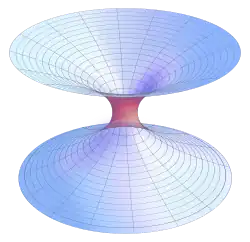 List of all portals
List of all portals -

-

-

-
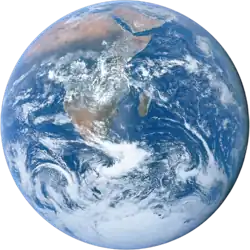
-

-

-

-

-

-
 Random portal
Random portal -
 WikiProject Portals
WikiProject Portals
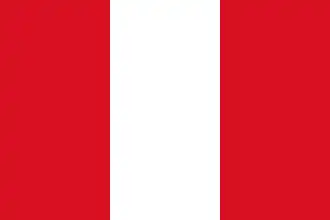
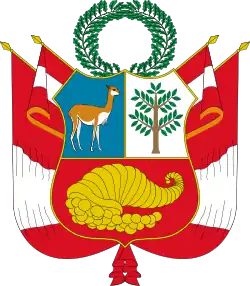
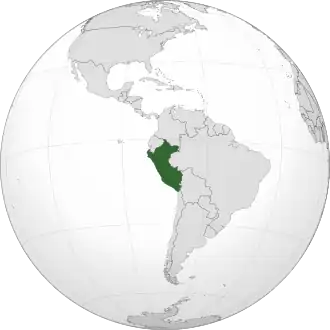
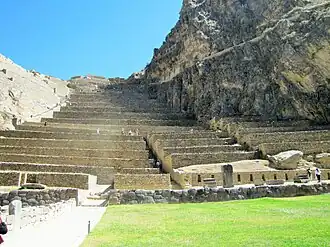
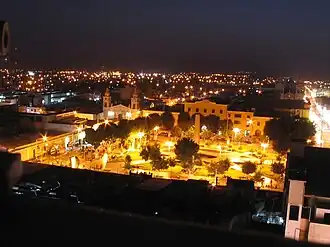

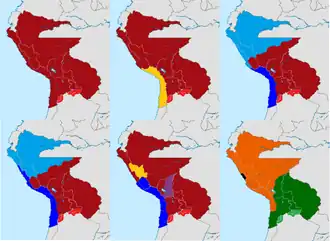
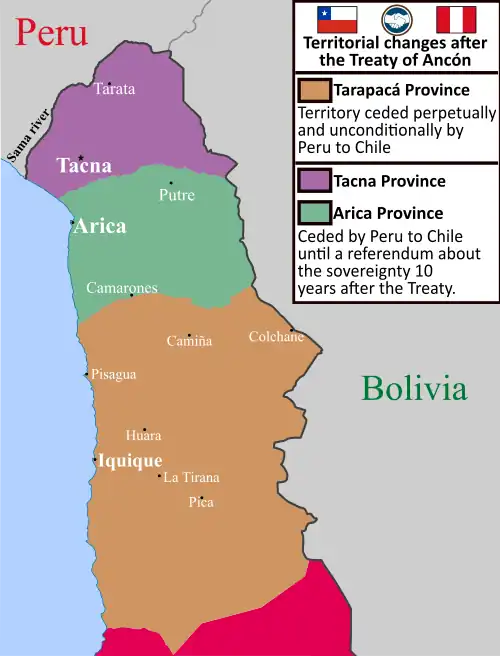
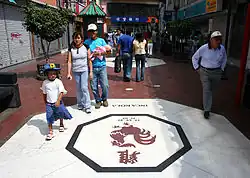
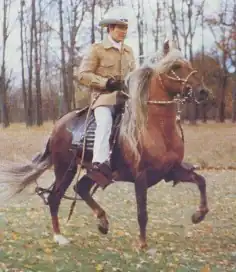

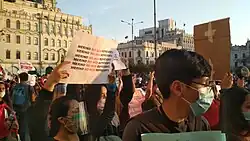
.png)
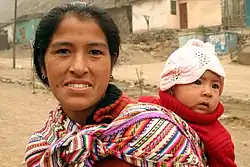
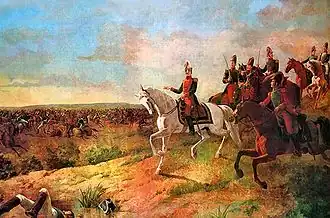
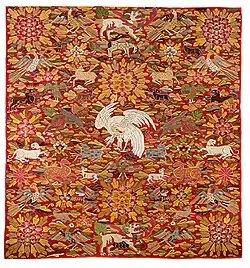
.svg.png)

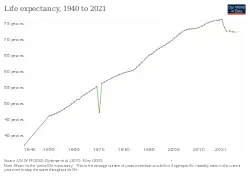
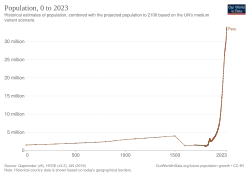
.svg.png)
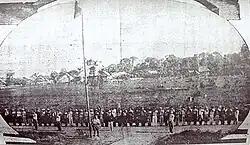
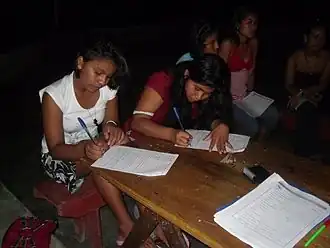
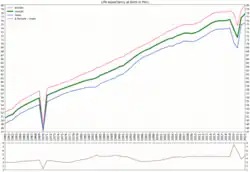
_LOC_2010592749.jpg)
